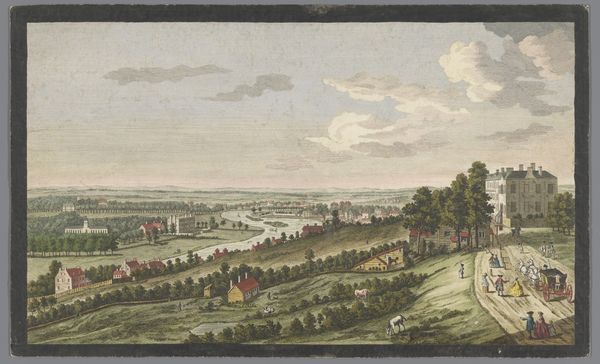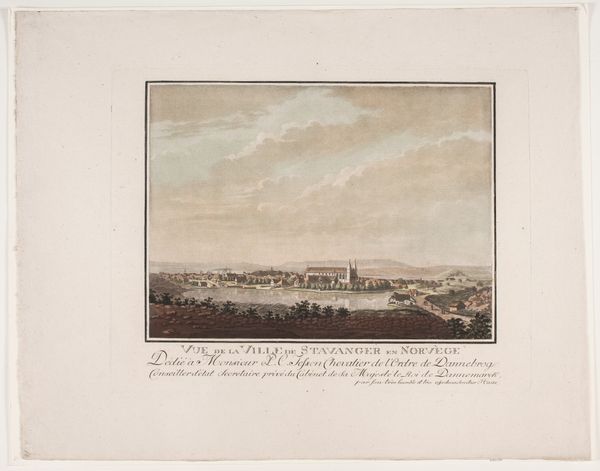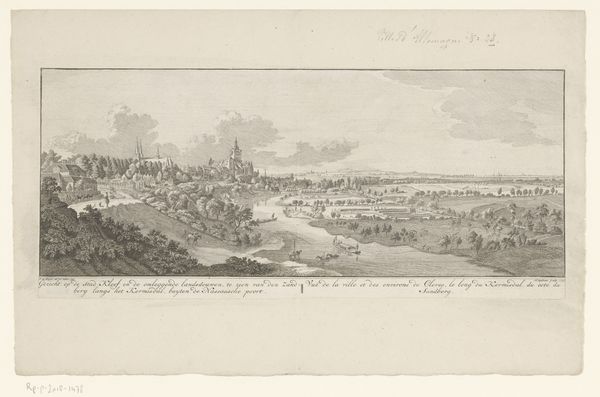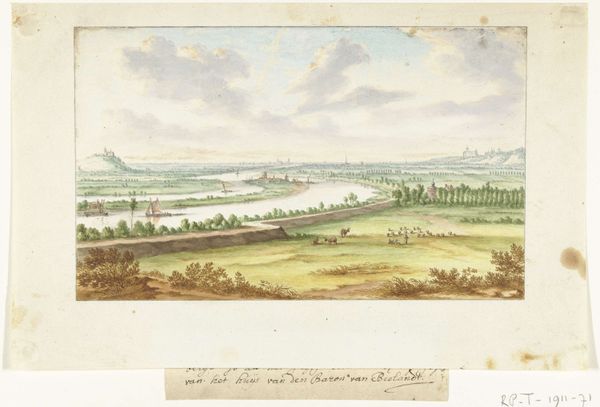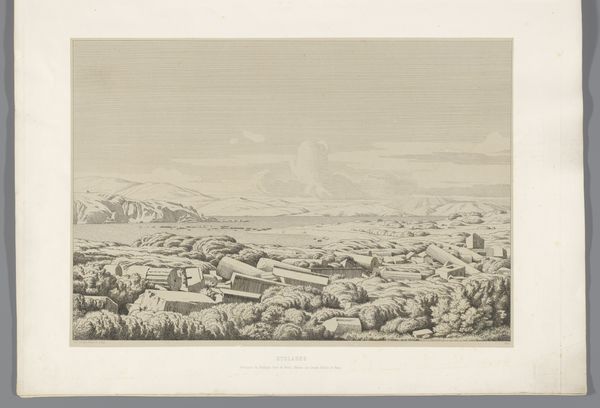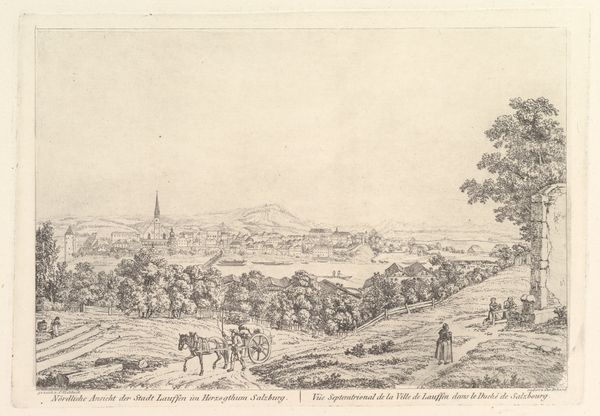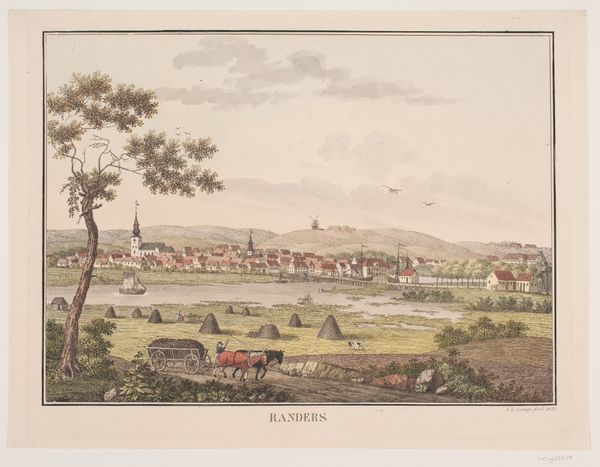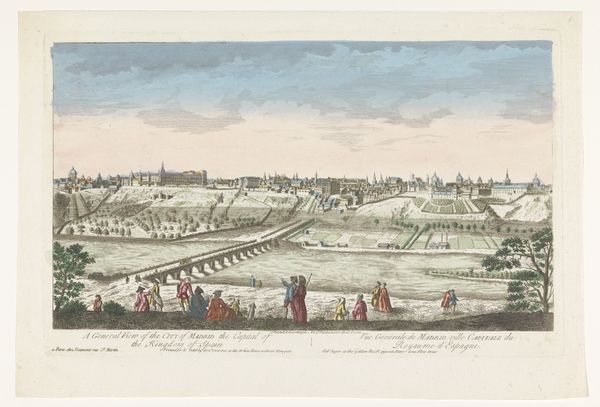
print, etching, watercolor
# print
#
etching
#
landscape
#
watercolor
#
romanticism
#
cityscape
#
genre-painting
#
watercolor
Dimensions: 268 mm (height) x 370 mm (width) (billedmaal), 312 mm (height) x 399 mm (width) (plademaal)
Editor: So, this is "Odense på Fyn, fra den Østlige side" by Søren L. Lange, created in 1805. It’s an etching with watercolor, and it strikes me as a wonderfully peaceful scene, almost idyllic with the cows and the city in the background. What pulls you in when you look at this work? Curator: It does have a certain tranquility, doesn't it? For me, it's the soft, diffused light and the way the artist balanced the rural foreground with the emerging urban landscape of Odense. You've got your genre painting elements right there in front – the farmers and the livestock. Do you notice how these human figures seem to be in conversation with the natural landscape? Editor: Yes, and I almost feel like they’re secondary to it. The focus really is on the land. Is that a commentary on the times, maybe? Curator: Perhaps. Remember, this is the Romantic era; there's a definite emphasis on the sublime power of nature. The figures are part of a harmonious, pre-industrial existence, existing in the shadows of, yet coexisting with, a rising urban presence in the distance. Consider what it meant to represent the burgeoning city through the prism of unspoiled, pastoral scenery at the time. Editor: I see it now! That little tension adds so much. It's more than just a pretty landscape; it's a story about a changing world. Curator: Exactly. It’s about negotiating progress, or perhaps, celebrating what is about to disappear or to morph in form. Does that add another layer for you, or alter your first impression? Editor: It completely does. I saw the peace first, now I sense this beautiful…almost melancholy feeling for something that's transitioning. Thanks for the insight. Curator: My pleasure. Art's best when it sparks these kinds of dialogues with ourselves.
Comments
No comments
Be the first to comment and join the conversation on the ultimate creative platform.
